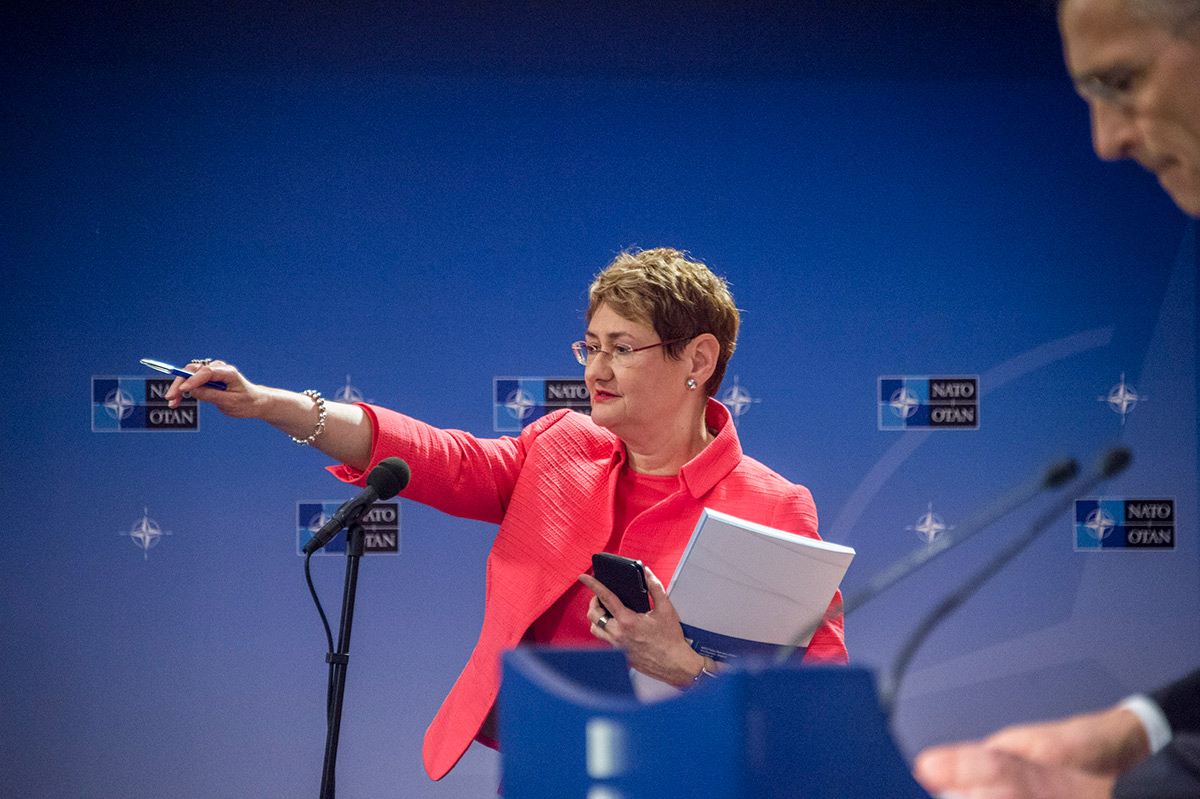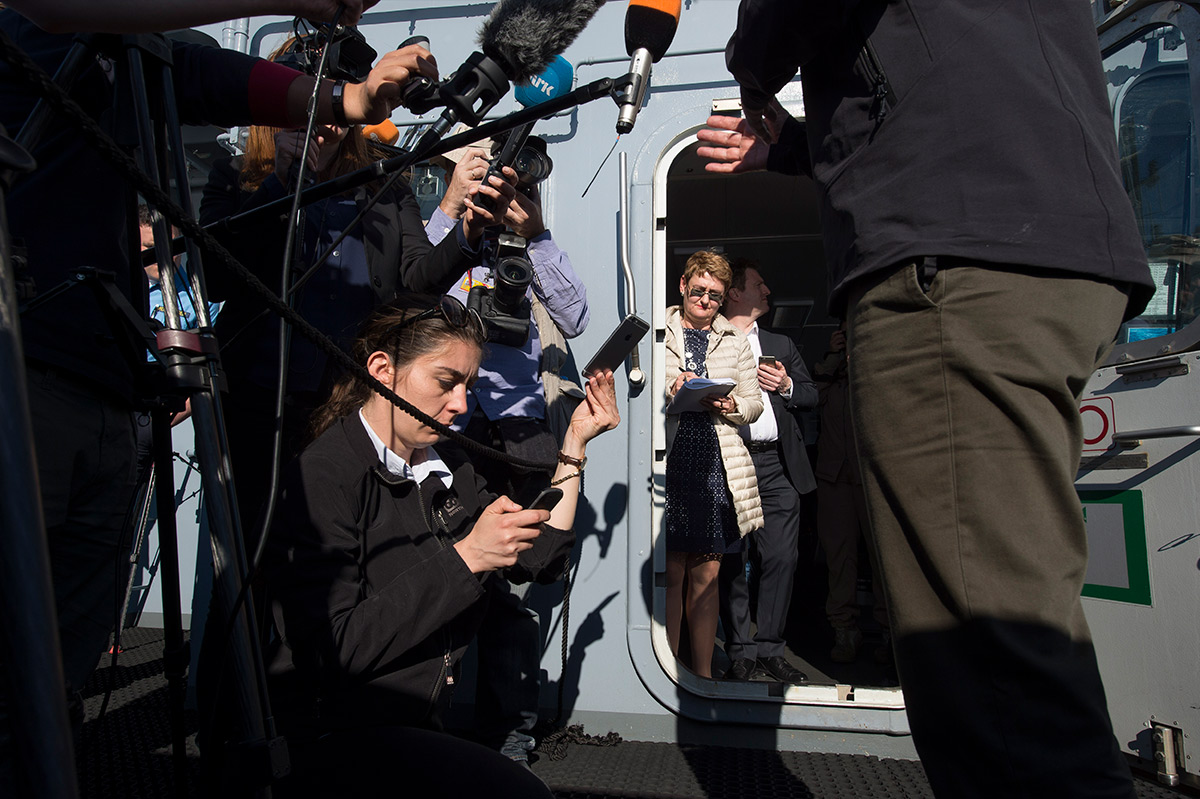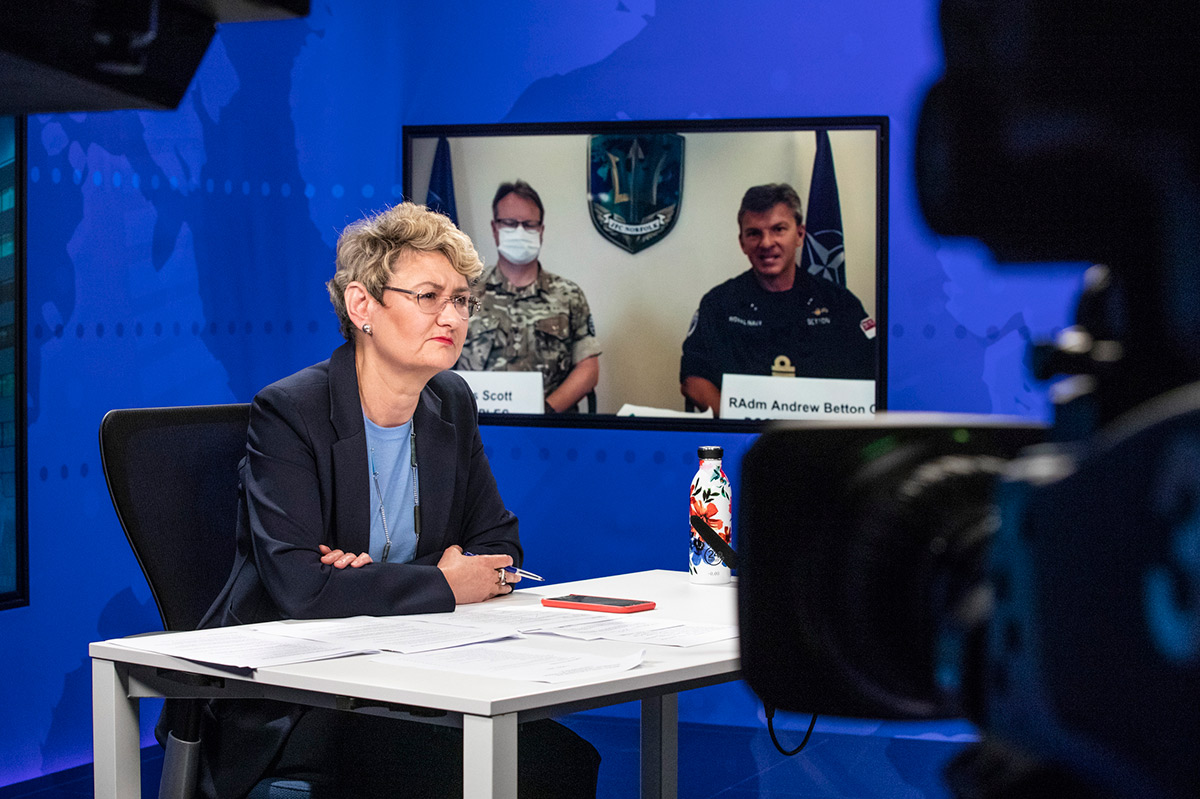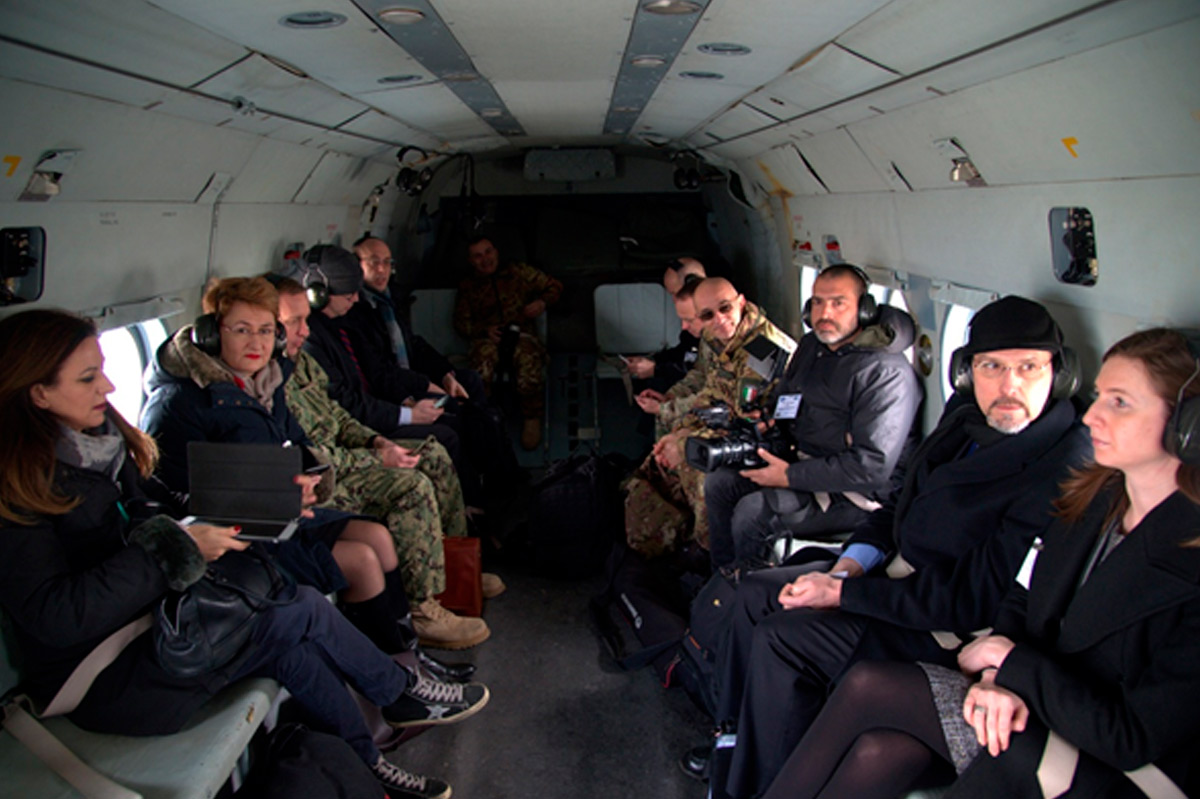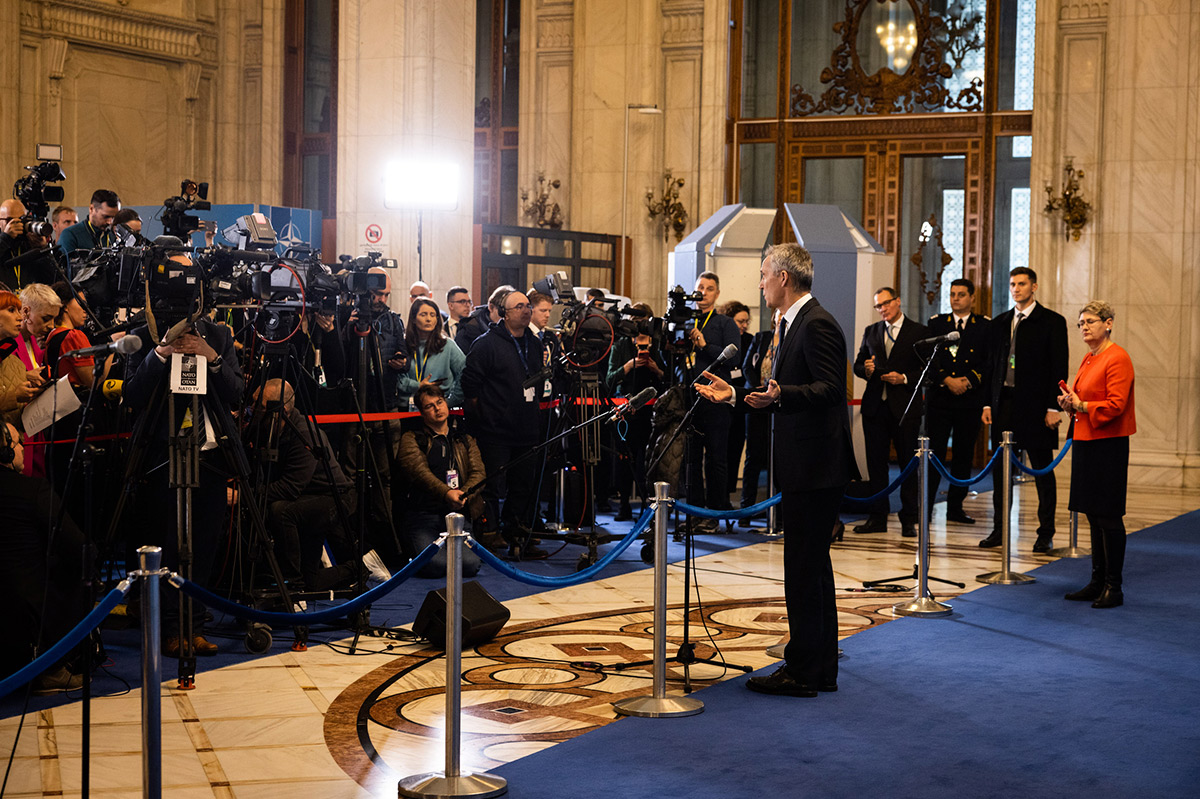Meet Oana Lungescu, the longest-serving and first woman NATO Spokesperson
In 2010, Oana Lungescu became the first woman, first former journalist and first person born in the former Eastern Bloc to take up the position of NATO Spokesperson. Over her 13-year tenure, Oana served two Secretaries General and oversaw the Alliance’s communications at significant milestones in Euro-Atlantic security. But how did Oana’s childhood in communist Romania impact her journey to NATO? What did the fall of the Berlin Wall mean for her? And how has NATO’s relationship with Russia evolved during her tenure?
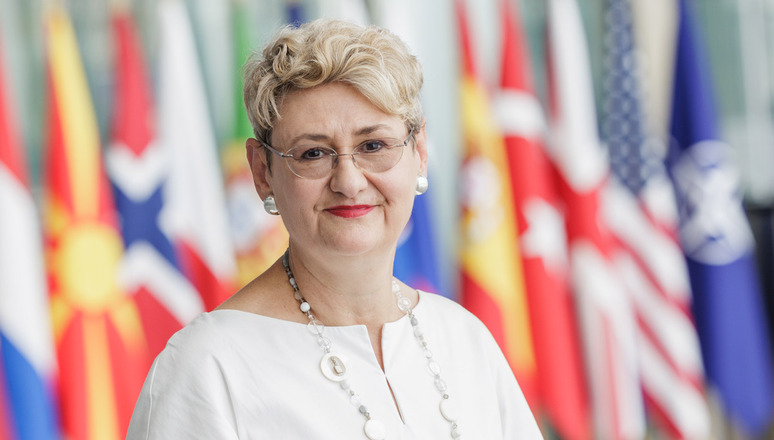
From the Eastern Bloc to NATO
“I grew up on the wrong side of the Iron Curtain,” begins Oana. She grew up under the authoritarian rule of Nicolae Ceaușescu – the leader of one of the most repressive regimes in the Eastern Bloc, where NATO was considered enemy number one. “We had very little to eat, no heating, and could not travel. We were expected to spy on each other. However, our minds remained free. I grew up listening to foreign radio stations, literally hidden under the bed covers, for fear that my neighbours would report me to the dreaded Securitate – the secret police. For my family, NATO was always a beacon of light.”
The Securitate later tried to recruit her as an informer in exchange for cancer drugs for her dying father. She refused, and years later, recorded several BBC documentaries about finding her Securitate files. Eventually, she was able to join her mother in Germany and started working as a journalist for the BBC World Service. Having witnessed the brutality of a communist regime, she vividly recalls 1989, the year when communism ended in Central and Eastern Europe. “I was covering these events from the BBC World Service in London. When the Berlin Wall fell, we knew that it was part of a long chain of dominoes falling across Europe. Those were dramatic and amazing moments. Just to see the happiness that freedom can bring to people. I still look back to 1989 as a year of grace.”

Oana in the Securitate archives investigating her own secret police files, 2009
Oana then became a BBC Europe correspondent, working from Brussels and later Berlin, covering EU and NATO affairs.
“In 1997, when I told my editors that NATO and EU enlargement would be a big story, few thought it would happen,” she says. While the former communist countries were implementing significant reforms to join the Alliance, NATO also reached out to Russia to establish a partnership, which continued until Russia’s aggression against Ukraine. In 1999, Czechia, Hungary and Poland joined NATO. In 2004, another seven countries – including Romania – became members of the Alliance in the largest round of enlargement to date. “Being there and watching the flags of Romania and all the other countries that joined at the same time being raised was one of the most emotional moments in my life. I probably shed a tear,” Oana admits. ”This was a homecoming: countries that belonged to the Euro-Atlantic family, but had been kept apart for so many decades, were finally coming home.”
Directing NATO communications during turbulent times
Oana’s tenure as Spokesperson coincided with the most turbulent period since the Cold War, including a breakdown in relations between NATO and Russia. “The NATO Summit in Lisbon in 2010 was the first high-level event that I attended as Spokesperson. At the time, we aspired towards a strategic partnership with Russia, and Medvedev, who was then Russian president, attended the Summit. I remember telling the Russian delegation that their President could not address the media before the Secretary General and President Obama at the end of the Summit as they wanted – those were the issues we had with Russia at that time. Now, it is a very different world.”
When Russia illegally annexed Crimea in 2014, Oana recalls a significant change in NATO’s efforts to fight disinformation with facts. “We were the first international organisation to set up a portal called ‘Setting the record straight’, which takes apart Russia’s key disinformation narratives,” Oana explains. NATO also relied on satellite imagery more deliberately to expose the movements of Russian troops on Ukraine’s borders.
By the end of 2021, as Russia was planning its full-fledged invasion of Ukraine, Oana and her team shifted from debunking disinformation to prebunking – calling out Russia’s plans and false narratives in advance so that audiences would see them for what they were. “In every press conference, every speech made by the Secretary General, we were uncovering Russia's plans and intentions. By declassifying an unprecedented amount of intelligence, we were exposing the public to the reality on the ground.”
On 24 February 2022, Russia launched its full-scale invasion. “It was a shock, but not a surprise,” says Oana. “Seeing Russia amass their troops and capabilities and bring blood banks to the border had indicated that the invasion was imminent.”
“We expected the invasion to start around 04:00 in the morning,” continues Oana. “I knew it would be a short night. When I came to the office very early on that grey February morning, the press team was already present, we were alerting our leadership in real time as to what we were seeing in the media space and we were ready to go to the North Atlantic Council meeting. We were prepared. NATO was prepared.”
Breaking the glass ceiling
Oana admits that at the time of her appointment in 2010, it was an unusual choice to employ a woman to the position of NATO Spokesperson. But it was also a signal of a more inclusive NATO. “According to the polls, it is women who perhaps know less about NATO and therefore are less inclined to support it. It was an important sign to women across the Alliance that they are part of security and defence. They have to be part of the solution.”
Life after NATO
On 18 July 2023, NATO Secretary General Jens Stoltenberg presented Oana with the NATO Meritorious Service Medal. She remains engaged in the conversation about security and defence, as a Distinguished Fellow at the Royal United Services Institute (RUSI), the leading UK defence and security think-tank, and a Senior Adviser to the European Policy Centre (EPC), writing and engaging with international media.
After 13 years with the Alliance, Oana remains passionate about NATO. “For me, joining the Alliance was not a career step, it was a mission. And even if I'm now retired from NATO, it remains a cornerstone of who I am.”
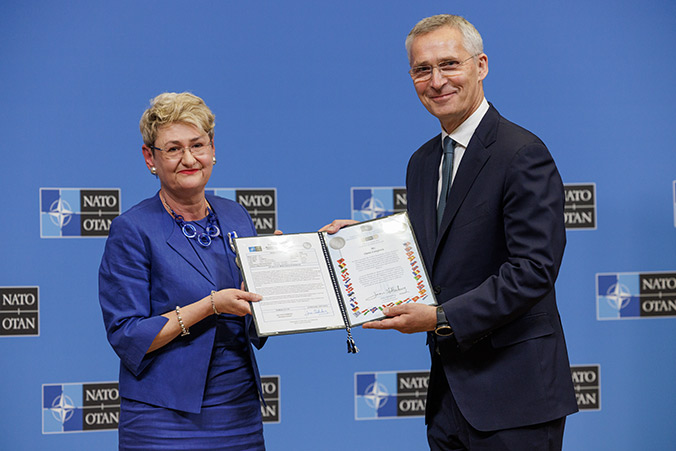
Oana and Secretary General Jens Stoltenberg during the NATO Meritorious Service Medal ceremony, July 2023.
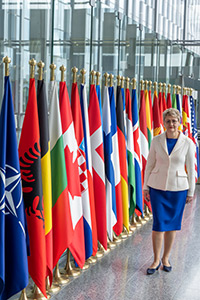
NATO, stay strong and stay united. If we stand united, Europe and North America, we can face every challenge, as we have done over the past 75 years, especially now at a time when we see autocracies coming closer together, like Russia, China, Iran and North Korea. This is an existential moment; what we do or do not do will change the face of the world for generations to come.
This article is part of the 75th anniversary #WeAreNATO series.
These interviews feature former NATO staff members who share their personal stories and first-hand experiences related to the Alliance's key moments and historic turning points, such as the Cold War and 1989, the first out-of-area missions, partnerships, 9/11 and more.

